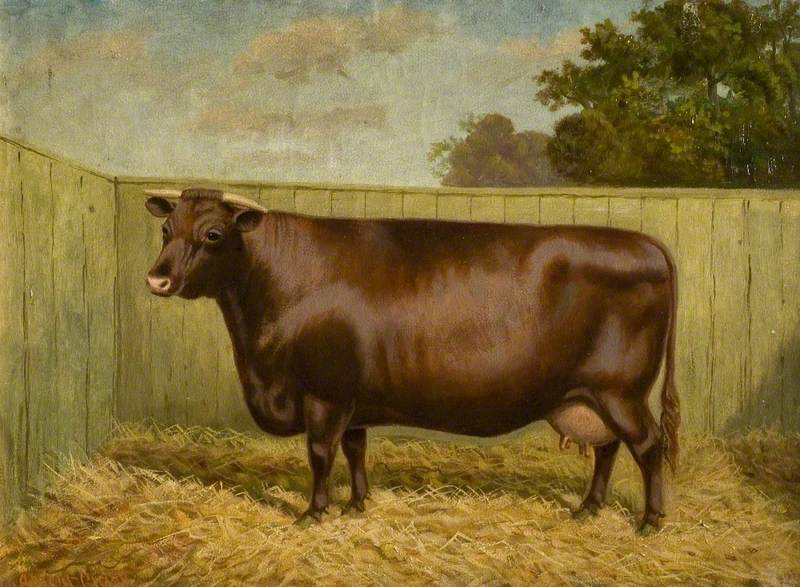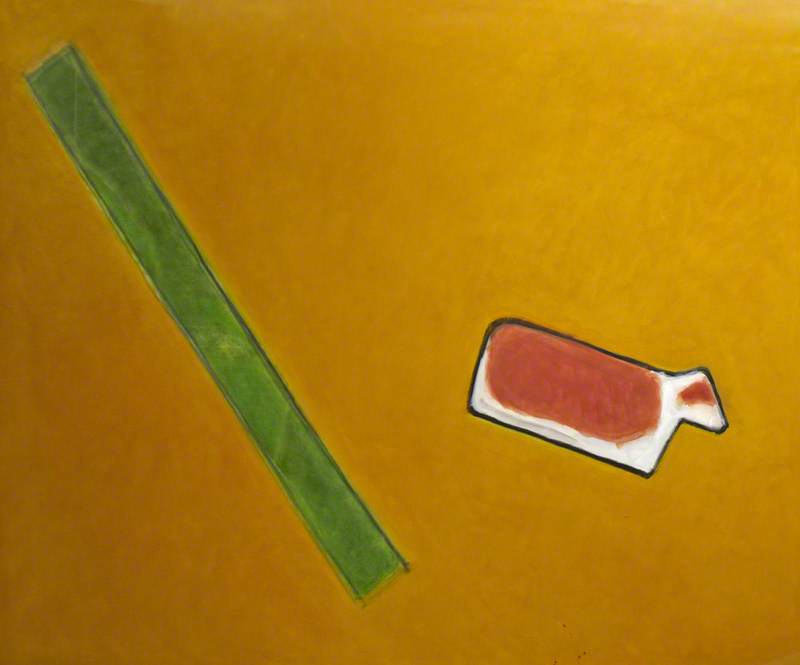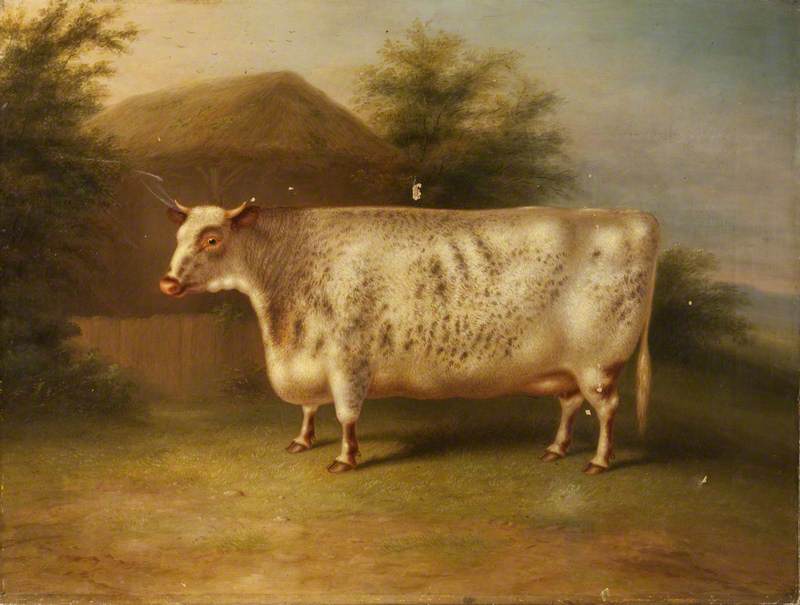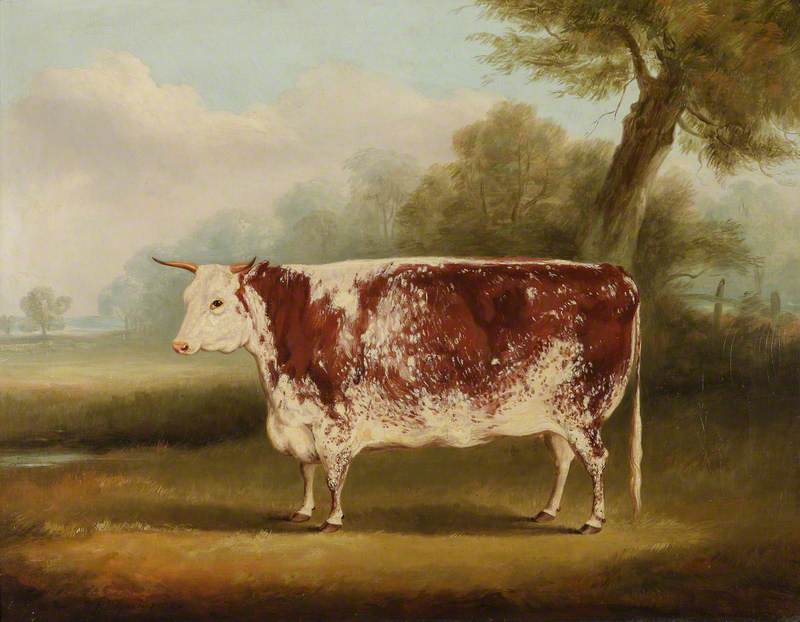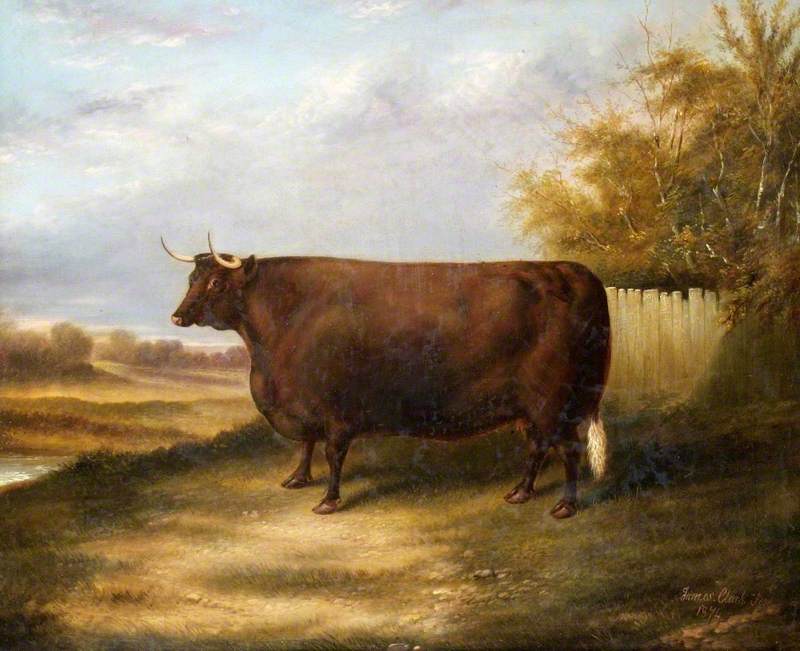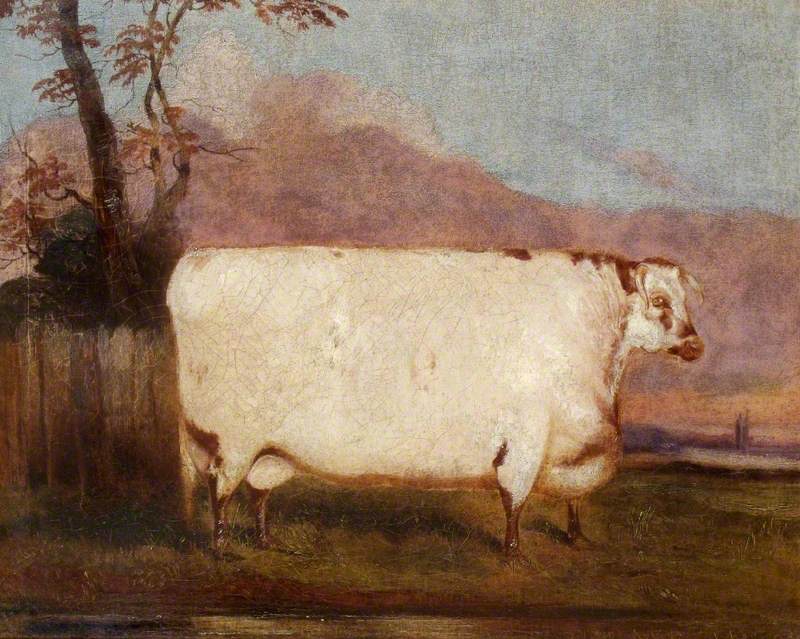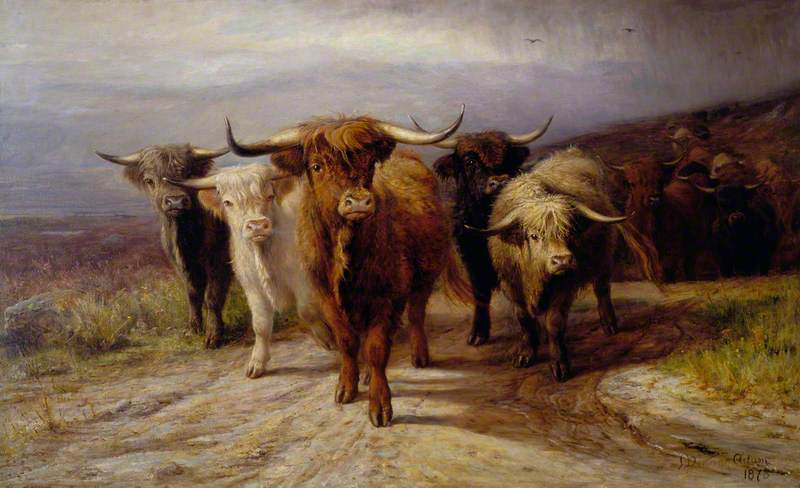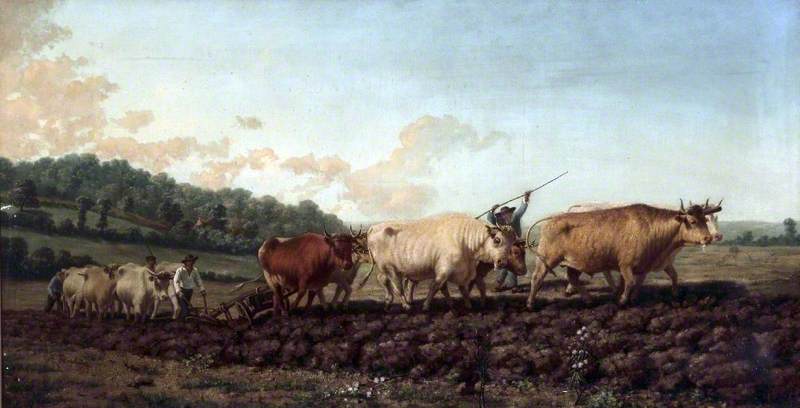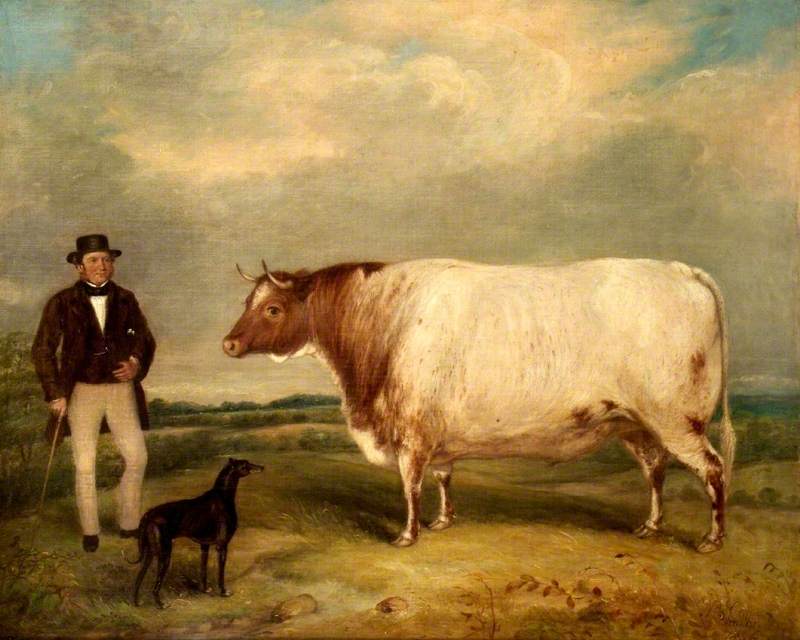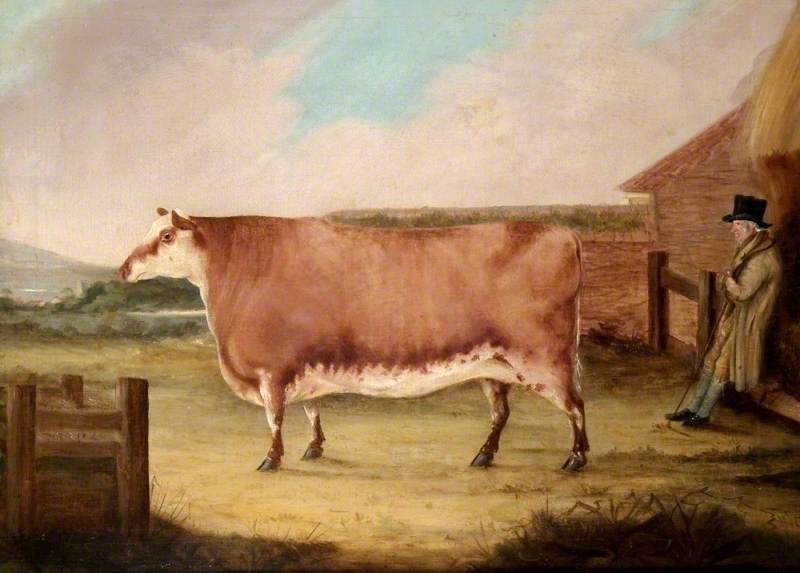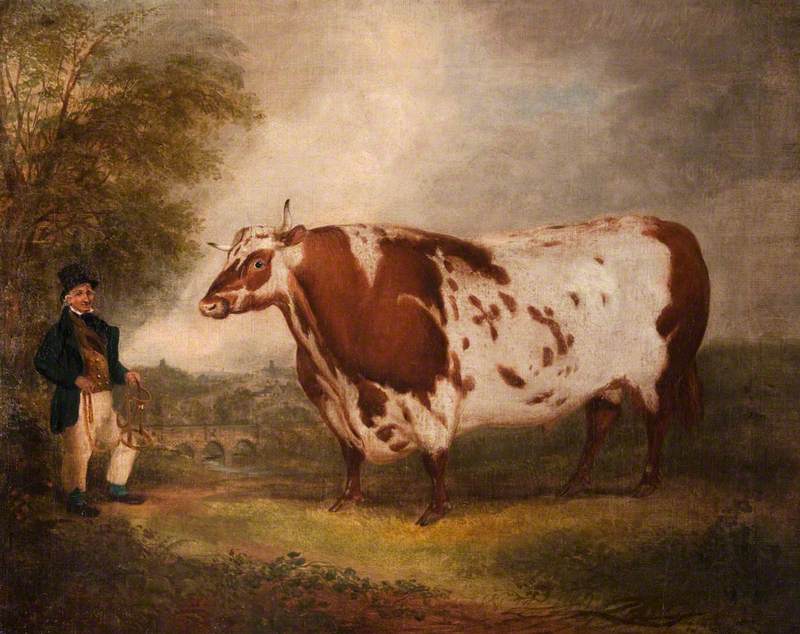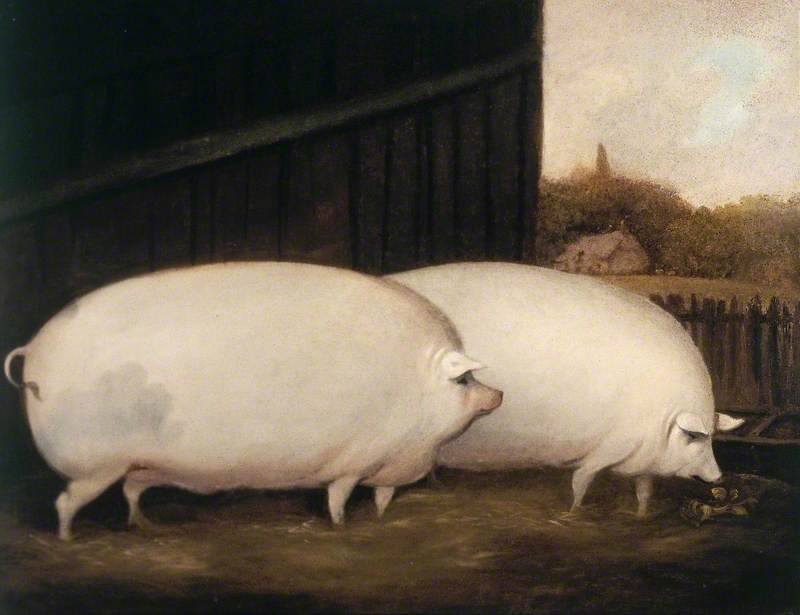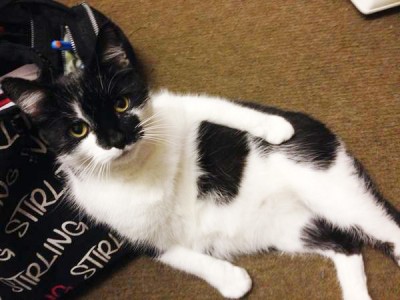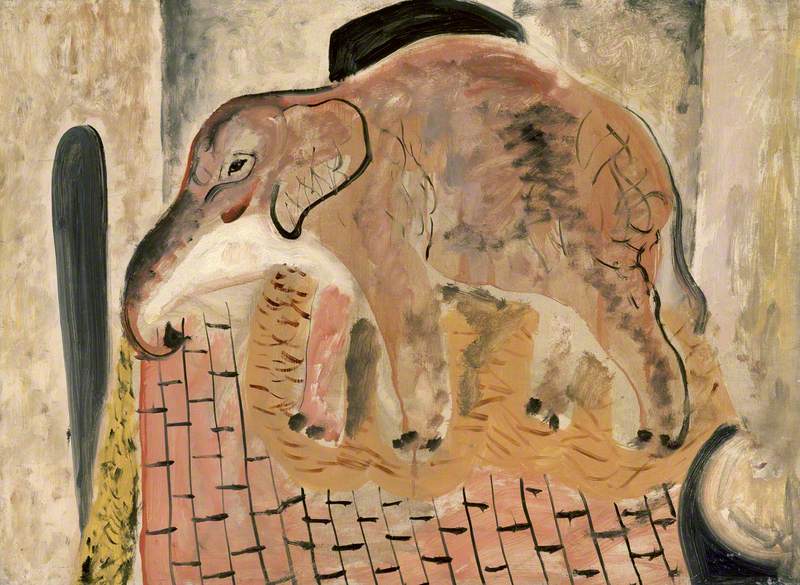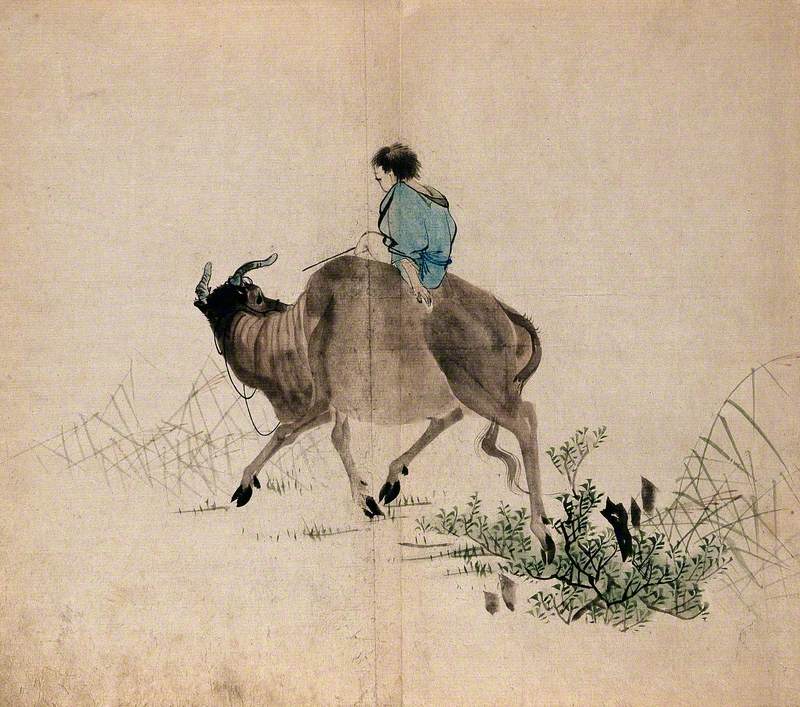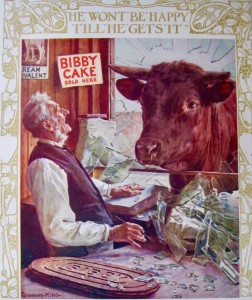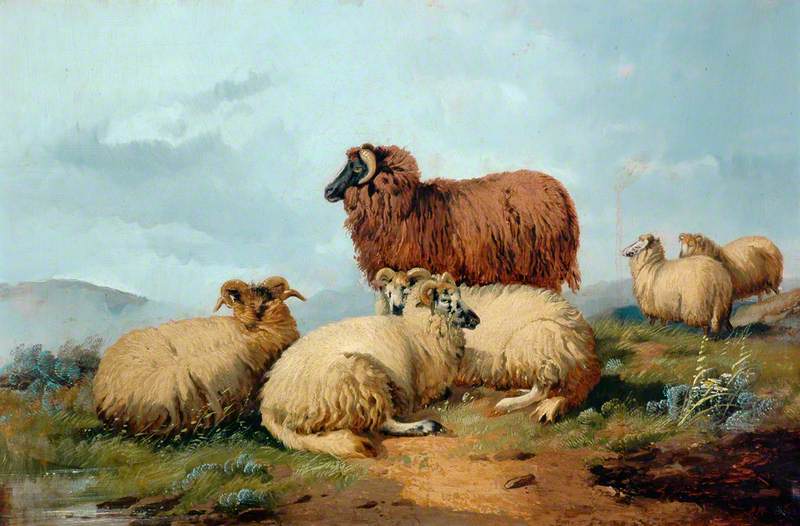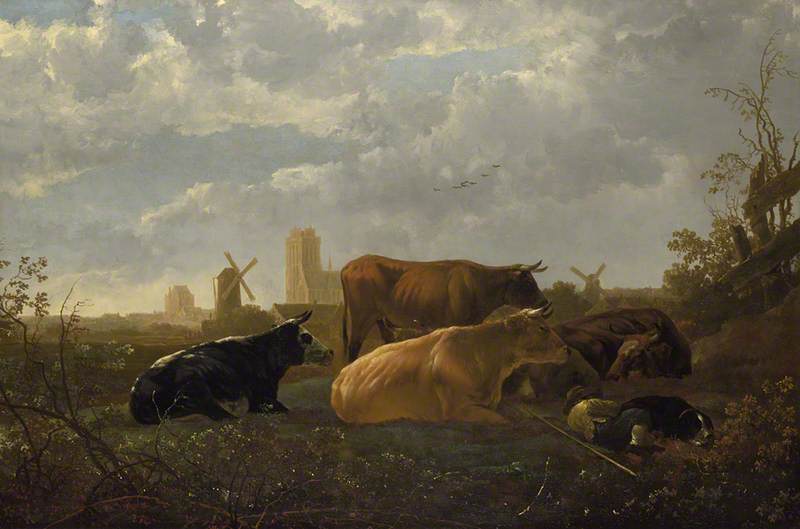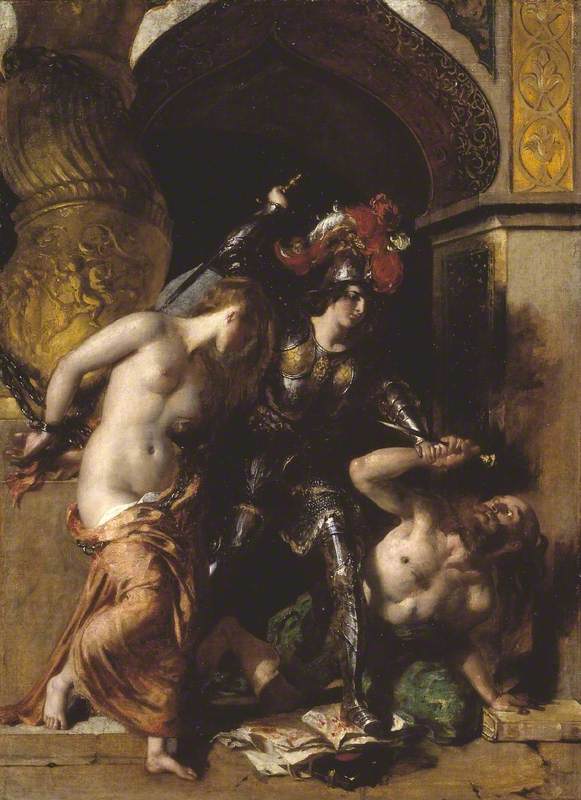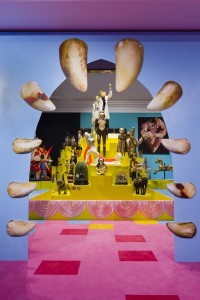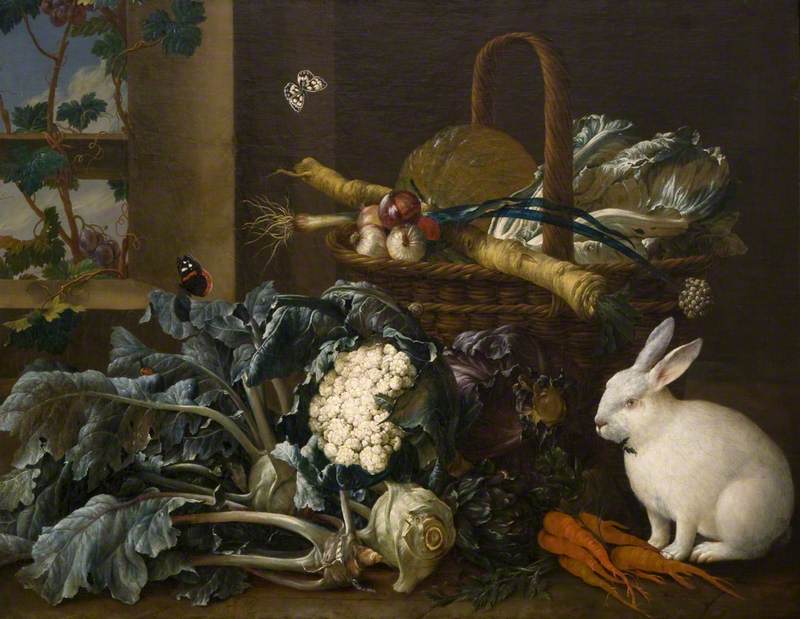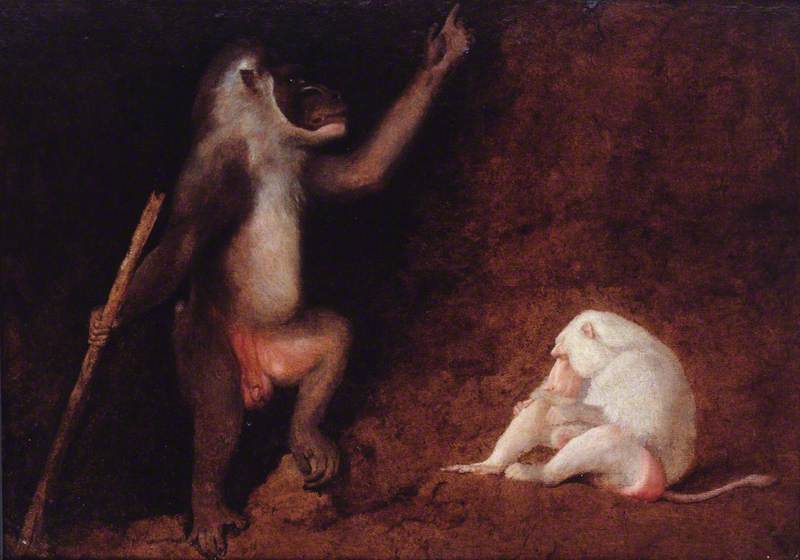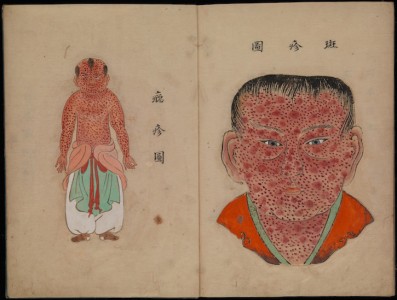Spending time among the thousands of paintings on Art UK often throws up questions. What is a sun fish? Why is there a painting of the Queen with Robert Burns? What makes this tie hot?
For a while, I’ve been wondering about a mystery I shall call ‘the rectangular cows of Art UK’. Some time ago, I came across dozens of very similar paintings, showing a cow standing by itself in a field, side-on (or ‘landscape’, if you will). And the cow, in many cases, would be almost perfectly rectangular.
However, looking at the mysterious rectangular cows also led to other questions about Art UK’s bovine representation.
Firstly, why are there so many cows?
The paintings above are a few picked out of hundreds. In fact, there are so many paintings of cows, I can’t possibly do them all justice here. Searches for ‘cow’, ‘heifer’, ‘ox’, ‘cattle’ and ‘bull’ all return rewarding results (a heifer, I have learned, being a cow that has not yet had a calf).
‘Cattle’ returns a very different kind of painting to ‘cow’. With ‘cattle’ you see lots of typical landscape scenes; lovely green meadows, maybe some water, and groups of nicely-painted cows grazing away. ‘Landscape with cattle’, or minor variations thereof, is a very common painting name.
Highland cows also seem to be particularly attractive for artists, as there are many paintings of them, including this from the Stirling Smith Art Gallery & Museum, where the cows look like they’re posing for an album cover.
Maybe the answer to why there are so many of these cows is a very simple one: ubiquity. Cows are an ever-present feature of a lot of the British countryside, and perfect subjects for artists to paint, given they get to stand around at leisure.
Are there any famous cows?
The searches got me wondering: as such a popular subject, are there any famous paintings of cows? Is there a cow equivalent of Whistlejacket, the much-lauded painting of a horse by George Stubbs, admired by visitors to the National Gallery?
The answer is: not really, although there are famous artists who have brought cows to the canvas. Andy Warhol did a series of them, and the German artist Franz Marc also created some brightly coloured bovines. There are some lovely paintings by Thomas Sidney Cooper – a landscape painter whose paintings of livestock earned him the nickname ‘cow Cooper’ – on Art UK.
Separated, But Not Divorced (The Bull)
1874–1882
Thomas Sidney Cooper (1803–1902) 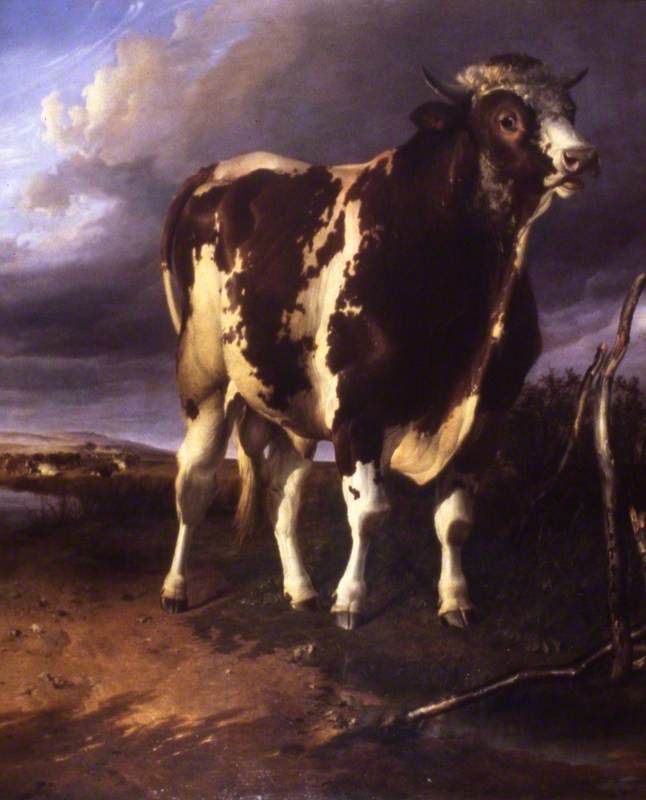
The French artist Rosa Bonheur (who herself was best known for painting horses) depicts cows among her pastoral scenes. They are markedly different from most of the other cow paintings on the site, where the animals are standing around at leisure: the oxen observed by Bonheur are hard at work ploughing.
What’s with the guys in the top hats?
Another sub-genre of cow paintings seems to be those that also feature a man standing by the cow, dressed much more smartly than you’d expect of a farmer.
The ox in this particular painting is a real monster. It towers above the tiny man in his nice coat and top hat, who holds a kind of harness that looks like it’d barely make it over the beast’s neck. Either the scale is off or the size of the ox has been exaggerated: and if this is the case, then why?
The clue to these is in the dates of the paintings. The early 1800s was when selective breeding for certain traits in animals was becoming a more common practice. The celebrity ‘Durham Ox’ – a bull so large it drew in crowds to marvel at its size – showed what could be done (and aspired to), and owners of prize livestock became increasingly proud of the animals they had bred. They commissioned paintings of themselves with their cattle, and to make the animals look as impressive and well-bred as possible, the artists have made some look excessively large, with spindly little legs holding up colossal bodies.
This trend wasn’t unique to cows: there are plenty of corpulent pigs and sheep to feast your eyes on too.
And finally… why are the cows rectangular?
The crux of the mystery.
The answer, as best I can find it, seems to be related to the points about status. Again, many of these paintings were made in the early 1800s, and the rectangular shape may have been another way of making the animals seem big and impressive.
Two things conspire to make the cows so angular. The first is the squared-off rump, and I haven't come up with an answer for why that is. The second is the overly bulgy bit in front of their front legs, the brisket. And, also according to my research, when cattle are judged for competitions or prizes, the brisket is taken into consideration. I quote: 'the brisket (the flap on a cow's neck) is only fat and skin. We generally want to see fullness to the brisket, this means that the animal has enough finish and muscle development. If there is too much finish, it will look 'messy', aka, skin will fold over and look a lot like double chins on people. The skin should be tight and the brisket full.'
So there we go. These paintings are probably just relics of a time when cattle were a marker of status, and breeding for size became a competition. Really famous cows from the 1800s could find themselves the subjects of everything from public displays to dinner plates, so perhaps the efforts of their owners conspired with the artists in an effort to secure them both a place in history.
Molly Tresadern, Art UK Content Creator and Marketer
